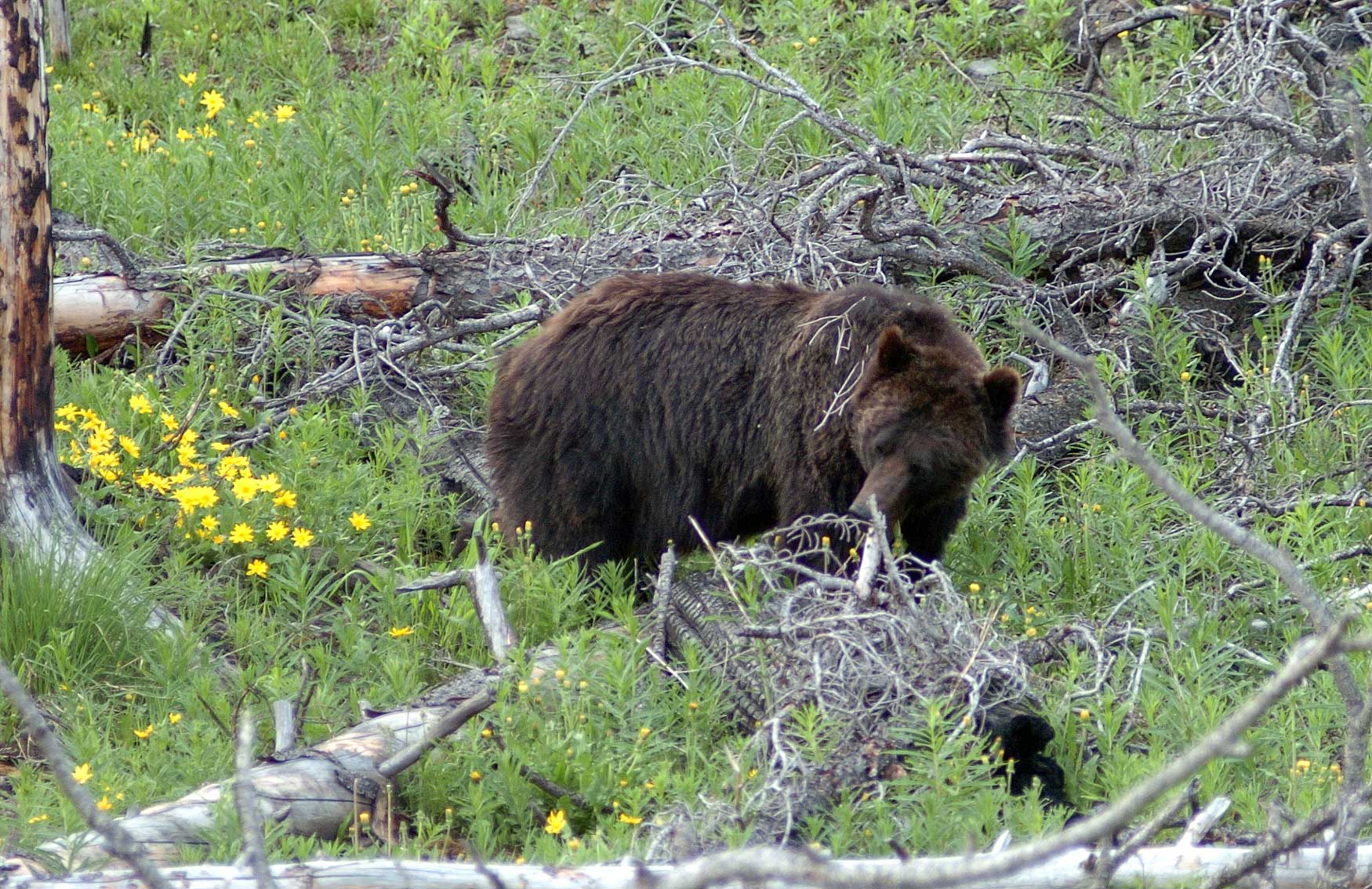A subadult grizzly bear scans the ground near Cub Creek on the east side of Yellowstone National Park. (Yellowstone Gate file photo by Ruffin Prevost – click to enlarge)
From Staff Reports
CODY, WYO. — Biologists, hikers and others are reporting that grizzly bears are emerging from hibernation across the greater Yellowstone area, and experts urge caution for those venturing into grizzly country.
Last week, Yellowstone National Park employees observed a grizzly bear in the north central portion of the park. Fresh tracks were also spotted then in the Old Faithful area. There have also been several reports of grizzly bear activity in the Shoshone National Forest, east of Yellowstone, as well as along the Rocky Mountain Front.
Bears begin looking for food soon after they emerge from their dens. They are attracted to elk and bison that have died during the winter. Carcasses are an important food source that can cause bears to sometimes react aggressively if they are surprised while feeding on them.
Biologists have said it is a little earlier than the typical time when bears begin emerging from hibernation, but a recent string of warm days and early signs of spring are the likely cause.
Yellowstone regulations require visitors to stay 100 yards from black bears and grizzly. Park officials advise that the best defense is to stay a safe distance from bears and use binoculars, a telescope or telephoto lens to get a closer look. All visitors traveling outside of developed areas should stay in groups of three or more, make noise on the trail, keep an eye out for bears and carry bear spray.
While firearms are allowed in the park, the discharge of a firearm is a violation of park regulations. Even the park’s law enforcement rangers who carry firearms on duty rely on bear spray rather than their weapons, Yellowstone officials say, as the most effective means to deal with a bear encounter.
Visitors are also reminded to keep food, garbage, barbecue grills and other attractants stored in hard-sided vehicles or bear-proof food storage boxes. This helps keep bears from becoming conditioned to human foods, and helps keep park visitors and their property safe.
Bear sightings should be reported to the nearest visitor center or ranger station as soon as possible.
Updated bear safety information is available on the Yellowstone National Park web site.

